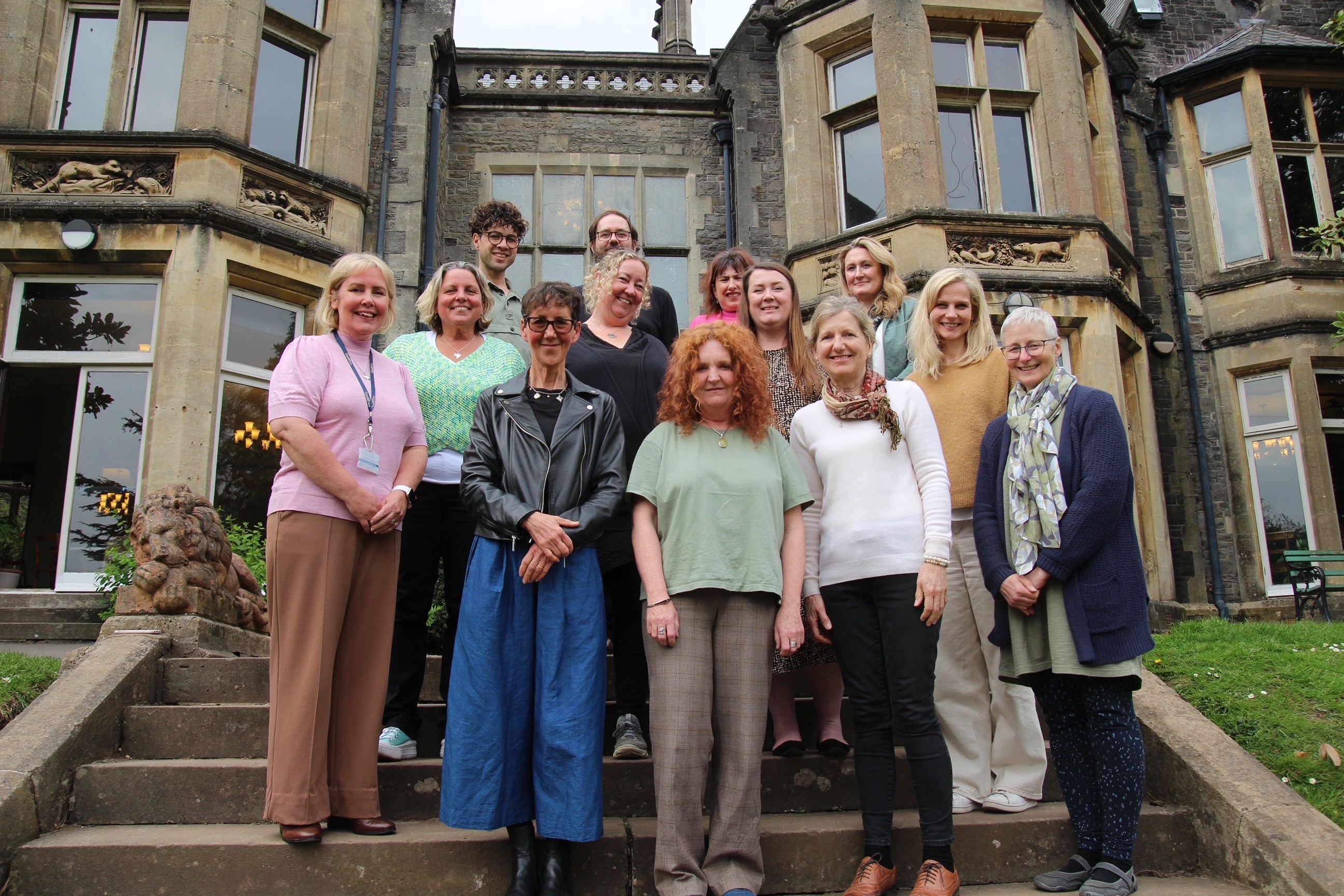Making Movement Irresistible (MMI)
Authors(s), Creator(s) and Contributors: Wendy Keay-Bright, Professor of Technology and Inclusion, Cardiff Metropolitan U
Publication Date: 15/06/2023
Categories: Case Studies, Featured
Partner(s): Delivery organisation: Cardiff Metropolitan University, School of Art and Design, School of Sport and Health Sciences Partners: Dawns i Bawb, Heidi Wilson Dance, Cwm Taf Morganwg Regional Partnership Board.
Funder(s): Arts Council of Wales, National Lottery Health & Wellbeing Fund, Cardiff Metropolitan University Cwm Taf Morganwg Regional Partnership Board
Introduction
Making Movement Irresistible aims to encourage older people to engage in playful movement and to interact with a partner. Our practice-led research has evolved in collaboration with clinical therapists, dance artists and activity coordinators whose goal is to improve health and wellbeing outcomes for this vulnerable population. Designing together we sought to understand something of each other’s practices, perspectives, and objectives in working with older adults. Through five workshops we discovered points of congruence and cross-disciplinary support in imagining movement activities that begin with the magical, creative and communicative potential of the human hand. This collaboration has resulted in a wearable technology prototype which will be tested in residential care settings.
The Challenge
The challenge is to find motivational activities for keeping older people healthy. Although the average life expectancy is ten years longer than for previous generations, these years are often lived in poor health (Centre for Ageing Better 2019). Research has evidenced the benefits of physical activity on health and wellbeing; when undertaken with other people, it can provide social opportunities which ameliorate the effect of loneliness and isolation. Many health services are using digital platforms, however, our research has found no existing system for enabling arts and health practitioners to create effective movement practices together. The welfare of staff working in social care and of arts practitioners is also addressed in this project through collaborative, creative approaches.
The Approach
Partners and participants, including: NAPA, Belong homes, Hywel Dda UHB, Anuerin Bevan HB, Bright Horizons, Harnich-Lacey Dance, took part in the following 5 iterative co-design workshops. 1. Who are we designing for, what are the barriers? 2. What makes movement irresistible, why dance, why technology? 3. What contextual factors need to be addressed? 4. Where and how will this be implemented? 5. What next? Beginning with making props from habadashery material, we gently introduced guided movement, LEDs and paper prototypes. Further movement experiments invited participants to notice sensations, space and opportunities for non-verbal conversations with others. Our improvisatory and somatic dance approach valued the moment of creation between actors, which inspired a fleeting, yet observable, artistic event that shifts and morphs over time. We then created a wearable and digital prototype that rendered movement visible, allowing wearers to illuminate, trace, mirror and improvise while they moved. The inclusion of a tiny heart rate monitor within the wearable device provided accurate, downloadable data during activity. Observations undertaken in residential settings examined how such an intervention could improve outcomes for older people, which informed future amb
The Impact
On average there were 16 partners and participants taking part the workshops. Everyone consented for us to use the data they provided in ‘exercise’ books, filmed movement interactions, interviews and group conversations. The data was gathered throughout the project, which contributed a rich curation of experience. Participants 'owned' their books and used the plain/line format to include text, drawings, diagrams and poems. Their ideas and feedback enabled us to find shared vocabularies for taking movement seriously in relation to wellbeing across the arts, health and academic sectors. Collaborating on the prototype facilitated a new artistic approach to envisioning and measuring an intervention and making it tangible. Reflections included: 'I have reflected that “prescribing” as in social prescribing reinforces the medicalisation – we need a different term to highlight that what we are really encouraging is social activity.' ‘Without collaborative ways of working, how would we know [we are] providing something that is useful and needed? Each voice, comment and view has shaped this project.’ ‘Scientists perspectives at the cellular level in relation to the arts was interesting … I didn’t feel comfortable dancing, but this gave me food for thought
Lessons Learned
Structuring the project around who, what, why, where and how facilitated a mode of enquiry that enabled partners to offer their skills to the group and to gradually add new techniques to their practice. Prioritising relationship building within the activities quickly generated a sense of ownership and networking. The incremental gathering of data, which was fed back to participants at each workshop, maintained curiosity and continuity while new ‘technology’ elements were encountered. This kept the work focussed, accessible and magical.
The Legacy
MMI has introduced activities and prototypes that enable arts and health professionals to consider how playful interactions, that encourage movement and social activity with a partner, could improve health outcomes for older people. We have been awarded funding by Cardiff Metropolitan University to create a Beta version for onsite testing. Taking this forward we are trademarking the design and creating demo videos. Our partners will continue to inform the intervention in their professional settings and advise on a commercialisation strategy.
Website and Social Media Links
Partner information and detailed case studies/videos of each workshop are available on the project website: makingmovementirresistible.org Programming experiments for digtial screens are free to try out here: https://jgl.github.io/MakingMovementIrresistible/ This case study is available as a slide show presentation: https://vimeo.com/837926933 Follow us on Twitter: MakingMovement_Irresistible @KeayWendy
Contact Details
Professor Wendy Keay-Bright (Project Manager, Design and Art Direction) wkbright@cardiffmet.ac.uk Heidi Wilson (Dance) hwilson@cardiffmet.ac.uk Dr Rachel Adams (Biomedical Science) RAdams@cardiffmet.ac.uk Professor Diane Crone (Sport and Exercise) DMcrone@cardiffmet.ac.uk
Tags: wearable technology, digital, interactive, playful, improvisational, movement older people, therapists, dance artists, care providers, residential homes, Wales

